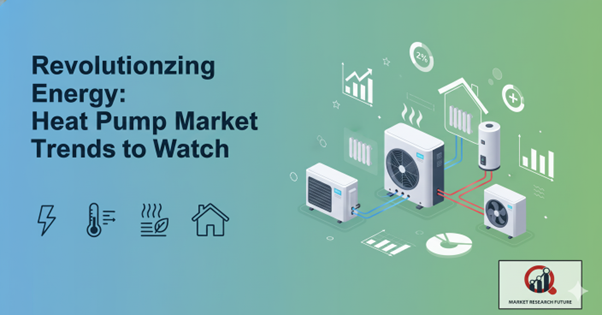Heat Pump Market Future: What does the Data Say?

A heat pump is a high-tech device that moves heat from a cooler area to a warmer one. It works based on the laws of thermodynamics. Heat pumps don't make heat by burning something or using electrical resistance like traditional heating systems do. Instead, they move existing thermal energy, which makes them very efficient for both heating and cooling.
Most homes, businesses, and factories use heat pumps to keep their spaces comfortable. They have a big advantage over regular systems because they can both heat and cool. Also, their lower operating costs and energy-efficient design make them a good choice for people who want climate control technologies that are good for the environment.
How Heat Pumps Work:
Most modern heat pumps use refrigerant-based systems that move a substance that absorbs heat from one place to another. Air-cooled models are very popular because they move heat between the inside and outside very well. These systems can take heat from even cool air and send it where it is needed. Newer designs now deal with problems like ice forming outside and efficiency loss in very hot or very cold weather, so they can work well in a wider range of climates.
Some heat pumps are part of district heating networks, which use them as big thermal batteries. In this system, extra heat from the warmer months is stored and sent out for use during the colder months. This is a more energy-efficient way to heat than using fossil fuels. As cities try to cut down on carbon emissions and make energy more sustainable, these kinds of integrations are getting more attention.
Benefits Compared to Older Systems
Compared to regular heating and cooling systems, heat pumps have many advantages:
- Energy Efficiency: Heat pumps use less electricity and lower overall energy demand by moving existing heat instead of making it.
- Dual Functionality: A single system can heat and cool your home in the winter and summer, so you don't need two separate devices.
- Saving Money: Using less energy means lower utility bills and operating costs over time.
- Benefits for the environment: Heat pumps help people use less fossil fuels, which leads to cleaner energy use and less greenhouse gas emissions.
Market Drivers and Adoption Trends
The global push for energy efficiency and long-lasting solutions is making heat pumps very popular very quickly. To save money and help the environment, both homes and businesses are replacing old heating systems with new heat pumps. More and more people want homes, offices, and factories to have better climate control, which has led to more money being spent on research and development. This has led to new technologies that make things work better and last longer.
As cities grow and energy costs rise, more and more people in emerging economies want heat pumps. Governments are encouraging building practices that use less energy, giving people money to install heat pumps, and adding renewable energy sources to city infrastructure. Because of this, both heating and cooling demand are becoming important areas of growth for the market.
Opportunities and Problems
Heat pumps are very efficient, but there are still some problems to solve. If air-cooled models aren't the right size, they might not work well in very hot or cold weather. Also, they can cost more to install than regular systems at first. But new technologies are making these problems less of a problem. New refrigerants, hybrid systems, and smart controls make heat pumps more efficient, better at doing their jobs, and more flexible, so they can be used in more places.
There are more and more chances to work in commercial buildings, district heating, and integrating renewable energy. As people care more about the environment and saving money, heat pumps are becoming a popular choice for modern climate control.
Looking Ahead
In 2025, heat pumps will likely be a key part of energy-efficient heating and cooling systems around the world. They are important for sustainable building design and urban development because they help reduce energy use, lower operating costs, and support the use of renewable energy. Innovation, government incentives, and more people learning about heat pumps will all help them become more popular, making sure that they stay at the forefront of the global energy transition.
Heat pumps are no longer just an option; they are now a key part of smart, long-lasting, and effective climate control around the world.

Leave a Comment